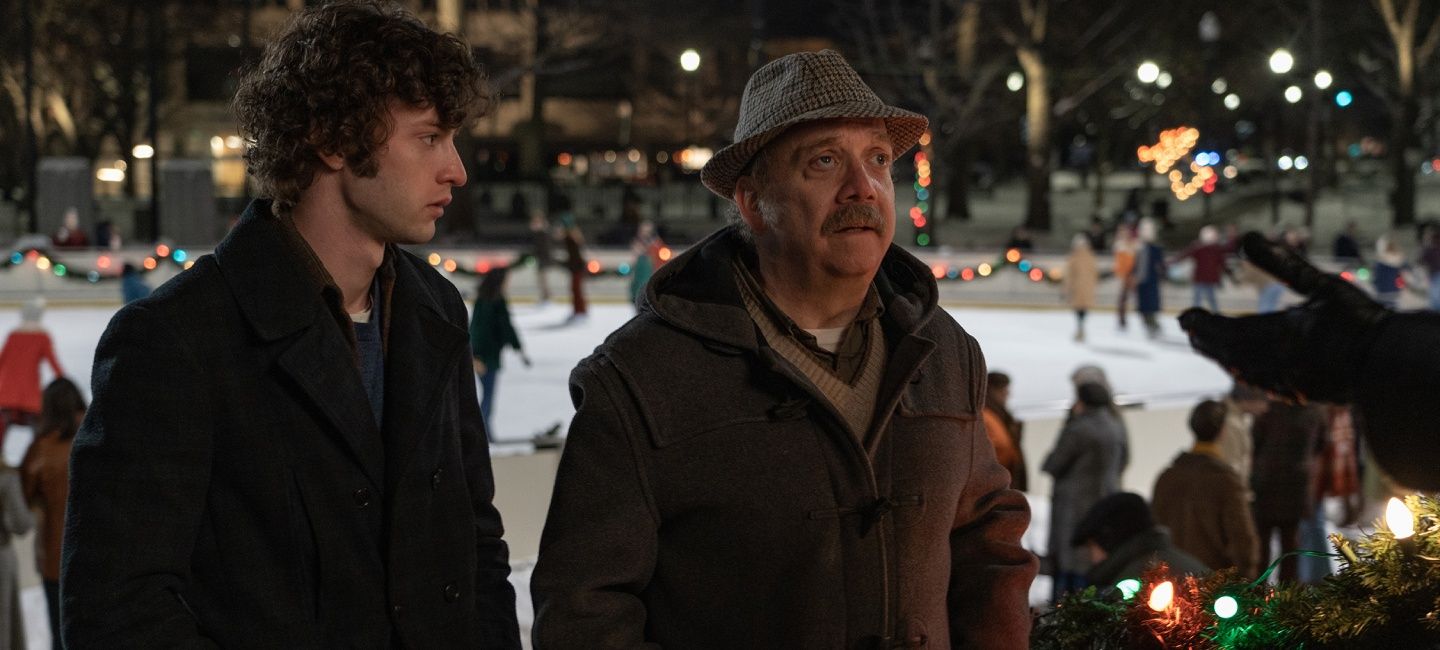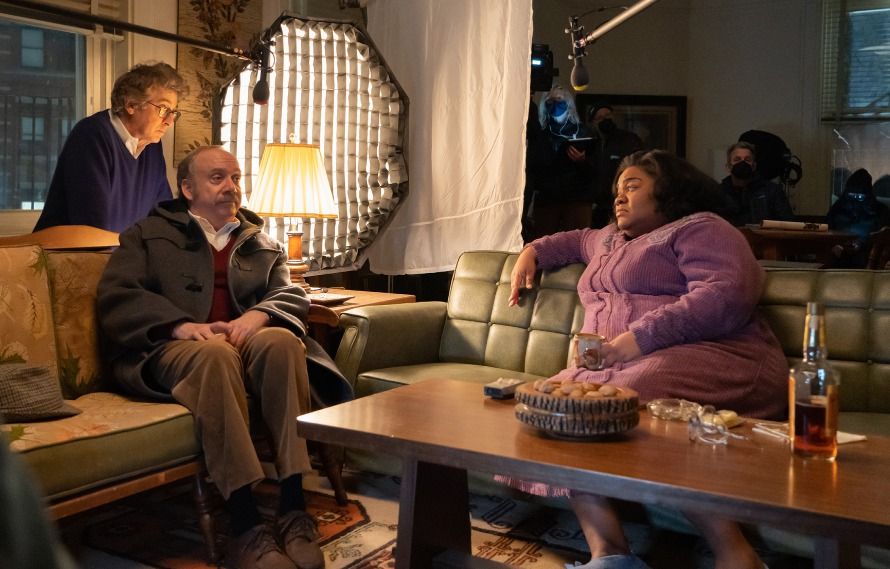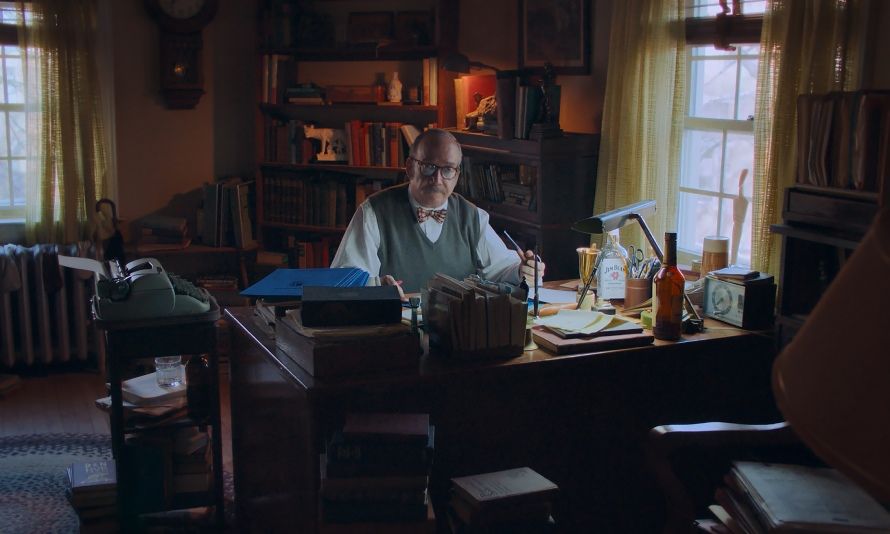
How Alexander Payne’s The Holdovers Championed Seventies Scenery
An exclusive Q&A with production designer Ryan Warren Smith.
In director Alexander Payne and writer David Hemingson’s The Holdovers, three different people—a curmudgeonly classics teacher (Paul Giamatti), a troublemaking student (Dominic Sessa), and a cook whose son recently died in the Vietnam War (Da’Vine Joy Randolph)—form an unexpected family when they get stuck at a New England prep school over the holiday recess. Set in the 1970s, the contemporary film, writes Flickering Myth, “is warm and comforting, happy and sad, all with Alexander Payne excelling within his wheelhouse of human connection and outrageous comedy.”
Giamatti says in the production notes, “One of the things I love about Alexander’s movies is the sense of place in each one of them.” To bring this world alive, Payne brought on production designer Ryan Warren Smith, who has excelled in capturing real American landscapes in TV shows like True Detective and films like Lean on Pete. Of “his ultra-convincing production design,” IndieWire writes that “the vibes are immaculate from the start and only grow more so as the characters gradually start to become as detailed as the world that The Holdovers constructs around them.”
We spoke with Smith about his approach to period movies, the importance of real locations, and two special Easter eggs in the film.
The Holdovers is now playing in select theaters, everywhere November 10. Get tickets now!
The official trailer for The Holdovers
How did you get involved with doing the production design for The Holdovers?
A few years ago, Alexander and I were set to make a different film, which unfortunately fell through at the last minute. During that time, we got to know each other. I was heartbroken that it didn’t work out because I am such a fan of Alexander’s work. When he sent me the script for The Holdovers, I was so excited. I really love movies with humor and heart like this. I wrote to him to express how I would love to be considered for the film, and he responded, “Shut up with being considered. We are in it now.”
This is Payne’s first period film.
A lot of period films feel a little cartoony, a bit over the top, because everything is too perfect. They show off the coolest toaster or some other stylish artifact from the period. For The Holdovers, that could be a problem because designs from the 1960s and 1970s can be so beautiful, but we wanted the sets to feel very subtle and lived in so that nothing in them would take the viewer out of the story. In The Holdovers, the story is so strong that we just wanted that to be the star.
How did you research the production design?
I started looking for items 10 years earlier than 1970, which we would lead with in the set design. Schools provided us with yearbooks which were really useful. We scanned all the pages to get a sense of what different environments and dorms really looked like. Then, it was just a big scavenger hunt to try to find all of those things.

Alexander Payne, Paul Giamatti, and Da’Vine Joy Randolph on the set of The Holdovers
You shot everything on location rather than on a soundstage. Why was that significant?
Alexander is such an open individual that he doesn’t want to control all aspects of the production. He wanted the real world to be part of the story. For us, it’s really important to sit and talk with the actual people who live in these locations. Often Alexander would cast them, as well. He doesn’t want an actor to come into a bar and mix a drink if he’s never done that before. This is part of his philosophy of filmmaking, to let real life breathe into the production. It is something that you can feel in the film.
How did you choose the location for Barton Academy?
Alexander wanted real environments. We knew we were never going to find everything we needed in one school. We ended up shooting at five different schools and piecing those elements together in order to create Barton Academy. For each, I would go in to figure out what I would need to build to cover up any of the stuff that was too modern. Because of Covid, we could not shoot while class was in session, so we had to do all of our shooting over the holiday break.
Did you work with people who lived there during the 1970s to verify your choices?
Definitely. We spent a lot of the time with people who lived in those places, and even in places that we didn’t choose.
The scenes in Boston almost feel like a documentary from the 1970s. How did you recreate that?
Alex and I really wanted to figure out how to do a documentary version of a fictional film. For the Boston section, we spent a lot of time walking the streets and seeking out little pockets that we could work with. Then I would go in and change out the window dressings and signage.
Were there ‘70s movies you watched to get a feel for the period?
We looked at films like The Landlord, which we watched over and over again, and The Last Detail. We watched them as much for their filmmaking techniques as their look. We really wanted the movie to feel like a film that not only took place in 1970 but that was created in 1970 as well. So those Hal Ashby films and the school yearbooks became our bibles.

Paul Giamatti in The Holdovers
The set direction is quite meticulous.
I work with a set decorator, Markus Wittmann, who is a one-of-a-kind artist. We have a very similar philosophy about set decoration, in that we spend a lot of time placing things both where the audience sees them and in places, like in drawers, where they don’t. After we have placed everything, we will spend three or more hours hanging out and talking, making sure that everything feels exactly right. It is a real hands-on process between the two of us. For me, this is where the real magic happens because, in that part, we really work by instinct and feeling about who the character is and what they would or would not have in their lives.
What does Paul’s office say about him?
I think it tells us that he is stuck. His office is pretty cluttered. There are things there that look like they have been there for weeks, maybe months. He has socks drying on the radiator. All those little things add up to tell us that Paul is stuck in his life, that there are all these things he has started and never finished.
There is also an Easter egg in his office?
There is a piece of set dressing that was in the apartment of Paul Giamatti’s character in Sideways. Paul brought it to set and Alexander thought we should put it into the set. There’s also a scene where Mary is pulling up to her sister's house. The two storefronts in front of the building are named after both Alexander’s and my kids.
This interview has been edited and condensed for clarity.